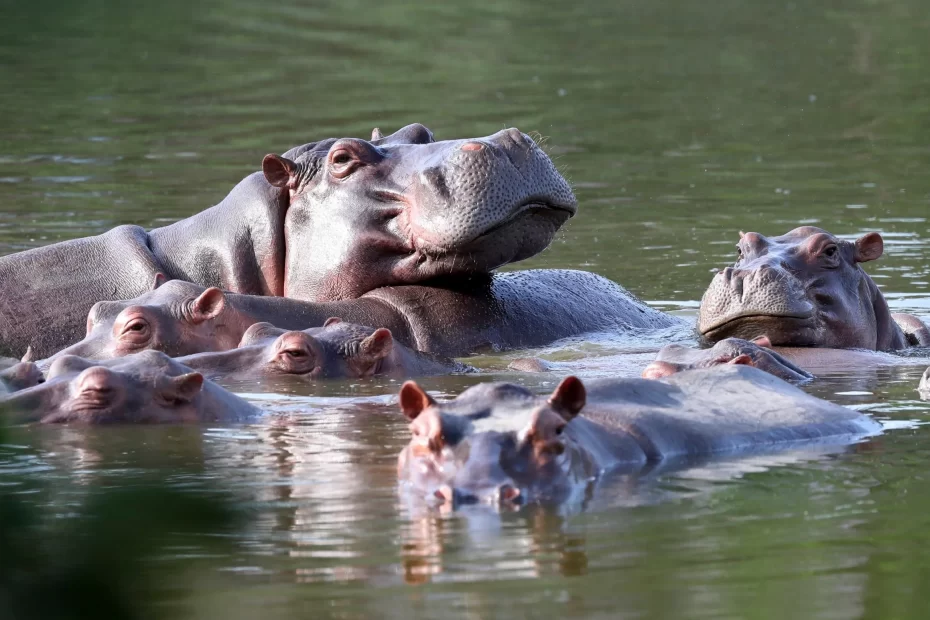Colombian drug kingpin Pablo Escobar may be known for his notorious cocaine empire and acts of violence, but there’s another aspect of his legacy that continues to impact Colombia today. In the 1980s, Escobar illegally imported four hippos for his private zoo, only to have them escape after his death in 1993. Now, over 150 of these “cocaine hippos” are wreaking havoc in the country’s waterways, posing serious environmental and safety concerns.
The Wild Story Behind Pablo Escobar’s Hippos
Running at speeds of almost 20 miles per hour, hippos are known for their sheer strength and ability to take down anything in their path. Escobar’s private zoo, located on his estate, Hacienda Nápoles, featured various exotic animals, including elephants and giraffes. In the 1980s, Escobar brought in the four hippos illegally, during the peak of his wealth and power.
After Escobar’s death, the government took control of the animals, but the hippos were left behind. Over time, they escaped and adapted to the Colombian environment, reverting to a more feral state. With no natural predators, their population began to grow rapidly, posing a threat to both the ecosystem and local communities.
How The “Cocaine Hippos” In Colombia Are Damaging The Ecosystem
The presence of these hippos in Colombia has caused significant disruption to the local ecosystem. As highly territorial creatures, they displace native species and eliminate any competition. Otters and manatees, for example, stand little chance against these African behemoths and are forced out or killed.
Moreover, the hippos’ waste has had detrimental effects on the Colombian waterways. Their excrement adds excessive nutrients to lakes, leading to harmful algal blooms that deplete oxygen levels and kill fish. The resulting bacteria and algae can also be harmful to humans and animals. These impacts pose serious challenges for local biodiversity and threaten the livelihoods of communities relying on these water sources.
The Growing Concern Around Pablo Escobar’s “Cocaine Hippos”
Without intervention, the population of Escobar’s “cocaine hippos” is projected to increase exponentially in the coming decades. This poses a pressing need for scientists and policymakers to find effective solutions to control the growing numbers.
The Colombian government has undertaken sterilization efforts as a last-ditch attempt to control the population. However, the surgical sterilization of each hippo costs around $9,800, making it financially challenging to address the problem comprehensively. Deporting or euthanizing some of the hippos has also been considered, but these options come with their own set of logistical and ethical challenges.
Colombia Begins Sterilizing Pablo Escobar’s Hippos
In November 2023, the Colombian government unveiled a plan to surgically sterilize the “cocaine hippos” and address the issue head-on. While costly, this measure aims to reduce the reproductive rates of the hippos and control their population growth. The government also plans to deport some of the hippos to other countries, but the associated expenses could amount to millions of dollars.
The urgency to address this issue is paramount, as the continued presence of Escobar’s hippos poses risks to both the environment and local communities. Future projections suggest that if left uncontrolled, the population could reach 1,000 by 2035. Experts warn that the excessive rainfall in Colombia complicates efforts to capture and manage the hippos, making the situation even more challenging.
Pablo Escobar’s pet hippos, unintentionally unleashed upon Colombia, continue to roam freely, leaving a trail of destruction in their wake. Despite the efforts to mitigate the impact, the long-lasting consequences of Escobar’s actions serve as a reminder of the complex legacies left by influential figures.
